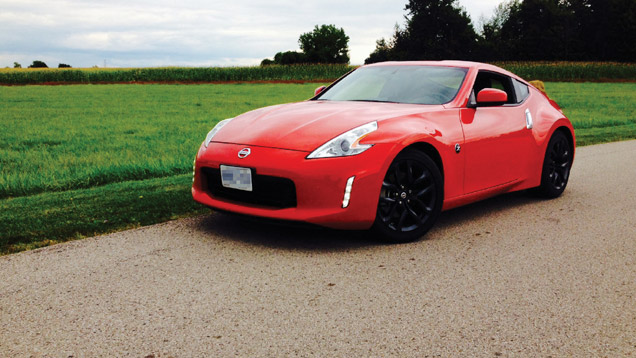Motoring: Nissan 370Z the perfect car for speed-lovers
 CREDIT: NAUMAN FAROOQ
CREDIT: NAUMAN FAROOQThe 2016 Nissan 370Z is a perfect ride for the highway, but not worth the buy if the purchasers commute is short and in the city.
The Z-car is the oldest Japanese sports car and has been in continual production since its launch in 1969. The Z-car is older than the Nissan brand because when these cars were first introduced they were badged as Datsun.
The reason it has had such staying power is simple: these are good-looking cars that offer enough performance to satisfy their target audience.
However, the latest 370Z model has not been flying off showroom floors due to its expensive price tag. At nearly $40,000, the 370Z sent buyers to look at the Hyundai Genesis Coupe or a Subaru BRZ instead.
Due to this reason, the clever folks at Nissan hatched a plan to offer a basic 370Z for the 2016 model year, that has no power seats, no rev-matching gearbox, a non-sporty exhaust, softer suspension, no body kit and no spoiler. By cutting the frills Nissan managed to cut the price down to $29,998.
The engine though has not been cut down; therefore, it still gets the same 3.7L V6 engine that can be found in all other 370Z models.
This motor produces 332 hp and 270 pound-feet of torque. Power is fed to only the rear wheels via a six-speed manual gearbox and if you use the clutch and gearbox correctly, you’ll sprint from 0 to 100 km/h in 5.1 seconds, to a maximum speed of about 250 km/h. So, it is a fast car, but numbers don’t tell you the whole story.
The reality is, when you start driving the 370Z, you’ll find that while it has the potential to be fast, driving it quickly is a bit annoying.
The main problem is with the flywheel for the manual gearbox: it’s too heavy, which results in a slow climb and fall for engine revs, which in turn ruins your fun.
Ideally, when you change gears, you want the revs to fall down quickly as you dip in the clutch. In the 370Z, they are left hanging up which results in jerky progress.
That is not the only problem. While this base version of the 370Z has softer suspension damping than other versions I have driven in the past, the ride quality on city streets is still very bouncy. If you drive a lot in the city and your commute isn’t carpet smooth, the drive will not be enjoyable.
On the plus side, its ride quality, handling and stability at highway speeds are spectacular. On Highway 401, I’d just leave it in sixthgear, up my pace and it never felt nervous at that speed.
When being pushed, I did wish it sounded better, the base model is just a bit too quiet; I expect my sports cars to shout a bit more.
I also expected it to be more economical, I averaged 10.9 L/100km during my week, which is exactly the same figure I got from the new Jaguar F-Type R AWD, a car that has a much bigger and more powerful engine.
There are some things the 370Z doesn’t do right, but it isn’t completely negative. For starters, I like its interior. It looks good and is well made and on the base model, it was fairly well equipped. Thanks to its hatch, you can carry numerous items in the 370Z, even though the trunk is not as deep as you’d expect.
Above all, the 370Z still looks fantastic and I really liked the no-spoiler look with black wheels on my base tester.
If you spend a lot of time on the highway, this car is worth the buy; however, if your commute is short and in the city, you’d be better off buying something else.
As a weekend toy or secondary car, the 2016 370Z is not bad, but I know there are better options out there and I hope Nissan studies those hard when time comes for them to design and develop the next Z-car.














